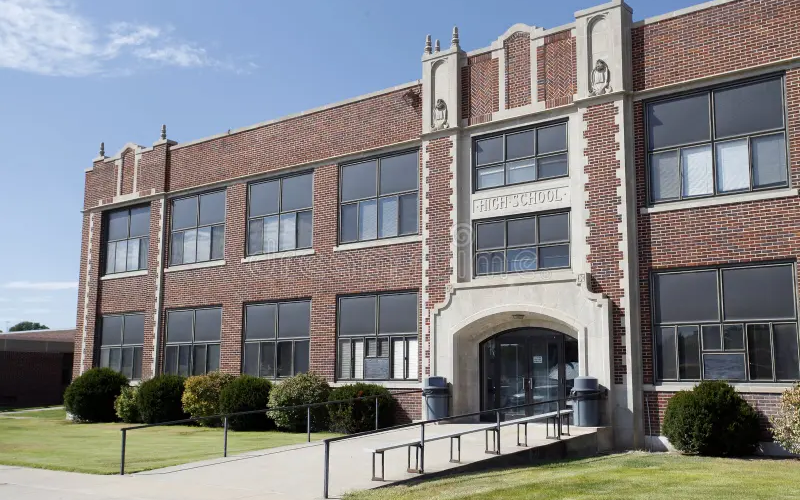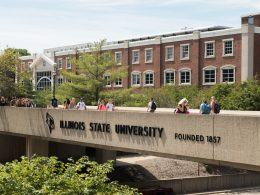Since October 7th, and most notably throughout the spring of 2024, much attention was paid to rising antisemitism and anti-Israel sentiments on college campuses. Protests and encampments on both elite and state university campuses across the U.S. featured antisemitic and pro-Hamas slogans and were seen widely in news stories and on social media. Multiple congressional hearings were held to give university presidents a chance to account for their mishandling of events on their campuses, and a few high profile presidents even lost their jobs.
Antisemitism and anti-Zionism at universities was a hot button issue long before October 7th. Proponents of BDS (the Boycott, Divestment, and Sanctions movement against Israel) have been infiltrating campuses for the last two and a half decades while anti-Israel professors have been injecting their so-called “anti-colonialist” and anti-Israel ideologies into the classroom. But what doesn’t get as much attention is the antisemitism that continues to rise in public and private high schools.
The Israeli American Council (IAC) reported a 690% increase in complaints about antisemitism in K-12 schools across the country in the three months following Hamas’ brutal attack on Israel on October 7th. In a Jerusalem Post article discussing these statistics, Michael Starr reports that “324 antisemitic and anti-Israel acts by students and teachers were documented between October and January. In the same time period during the previous year there were only 41 incidents recorded by IAC, and 116 complaints during the entire school year.” According to the IAC, the majority of these antisemitic incidents took place in high schools.
This is a frightening development, but it’s not a new one. Adam Milstein, a co-founder of the IAC and current board member and Chairman Emeritus, warned of the rise of antisemitism in U.S. high schools in a Jerusalem Post article in September 2022. His words are all the more relevant today in our post-October 7th world. In addition to his work with the IAC, Milstein is the co-founder of the Adam and Gila Milstein Family Foundation, which he and his wife Gila started in 2000. The foundation’s charitable work focuses on strengthening American values, supporting the U.S.-Israel alliance, and combating bigotry and hatred in all forms, including in schools. Milstein has expertise and experience in this arena, so it’s vital to unpack his analysis.
Milstein tracks the recent spike in antisemitism to “activist teachers and administrators” who have injected antisemitism into high schools through “Diversity, Equity, and Inclusion (DEI) departments and by promoting radical curricula steeped in Critical Race Theory (CRT).” These ideologies are never friendly to Jews, painting them as “privileged white oppressors.” It’s no surprise then that this framework labels Israel, the Jewish State, as an “oppressive ethno-state engaged in apartheid, colonialism, and ethnic cleansing.”
The consequences of this ideological creep had become apparent when Milstein wrote the article. Reports that high school students engaged in “antisemitic bullying and harassment toward their Jewish peers” were increasing, and this bullying was always amplified by social media. This has only escalated since October 7th, even bleeding over into student-run school publications. JTA recently reported that high school yearbooks have now become platforms for anti-Israel propaganda. Quotes in support of Hamas appeared in yearbook pages from Chicago to Houston to Arlington, VA. In one such incident at a New Jersey high school, the yearbook “was distributed with a photo of the ‘Jewish Student Association’ replaced with one of a Muslim student group. The names of the Jewish students were also removed.”
Antisemitic bullying takes many forms in high school. Sometimes it’s blatant, such as the anti-Israel student walkouts that Republican representatives grilled administrators on in a May 8th, 2024 congressional hearing. But it’s often more subtle. Teenagers are “particularly impressionable,” says Milstein, so prescribing to the trendy left-wing ideas that are popular in certain circles may be the only ticket Jewish students have into social acceptance. At such impressionable ages, it’s almost impossible for teens to “speak out against classmates who promote” these ideas, “even when [they] advance antisemitic canards,” or else they risk social isolation.
Even at the parental level, antisemitism in high schools is trickier to deal with than in college. Milstein reports that there is “even less room to challenge authority,” and that parents of high schoolers are “often hesitant and afraid to speak out against school authorities.” To illustrate this, Milstein presents an example of an elite Los Angeles school expelling a young Jewish student when her father questioned administrators about “racially segregated meetings” that were held, which “encourage[ed] students to treat Jews as ‘oppressors.’”
Because the vast majority of teenagers attend high school, antisemitism at that level is perhaps a more pressing issue than at the college level. “The stakes are even higher,” Milstein says, because “about one-third of all American teens” do not pursue their education beyond high school. Therefore, the issue must be addressed earlier. “If our youth are being inculcated with antisemitic ideologies from a young age, this will be carried on not only to universities, but also to society.”
What’s to be done? Milstein argues that the best defense is to instill in young people a strong Jewish identity and “deep connection to the State of Israel so that any indoctrination they encounter in high schools doesn’t carry weight.” They must be “educated about their civil rights” and “empowered with the ability to identify, report, and document” antisemitic incidents. DEI and CRT measures, so often disguised within “Ethnic Studies” curricula, must not be allowed to proliferate if they place Jews in the “white oppressor” category. And finally, both teens and parents must be empowered to expose antisemitic ideas and those who spread them without fear of reprisals.
Ultimately, it’s up to the Jewish community as a whole to ensure a safe space for Jewish children and teens in educational settings. “For American Jews, education is fundamental,” Milstein says. “Our children are entitled to and deserve top quality education free of malice, discrimination and antisemitism.” That’s why we must take his advice to heart, stay vigilant, and be brave enough to speak up when the dignity and safety of our youth is threatened at school.









